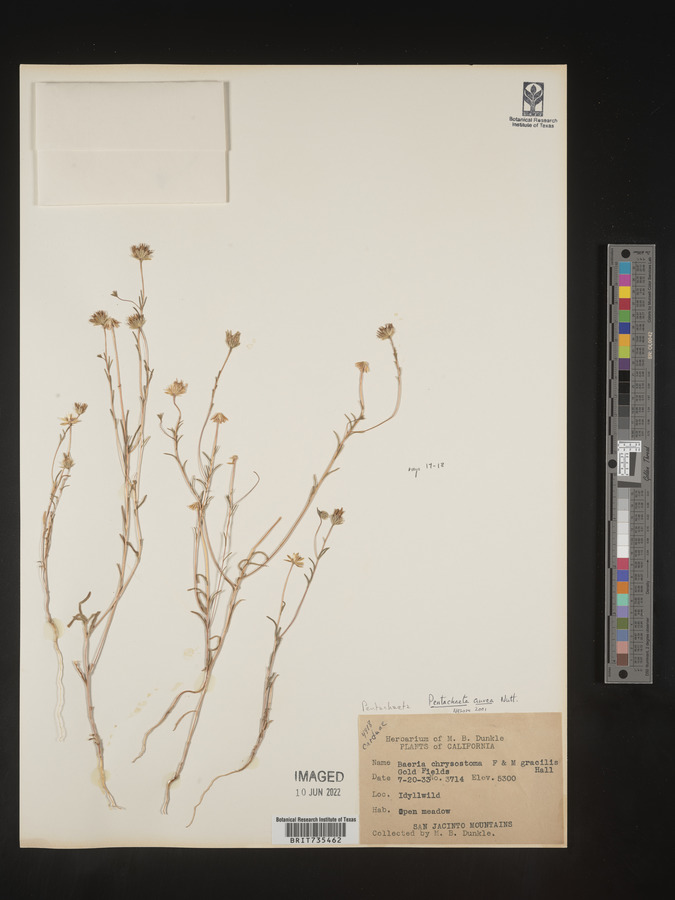
|
Family: Asteraceae |
Annuals, 2-48 cm (taprooted). Stems erect to ascending, simple or branched on proximal 1 / 2 , glabrous or sparsely villous to tomentose. Leaves basal and cauline; alternate; sessile; blades (1-nerved), narrowly oblanceolate to linear or filiform, margins entire, usually ciliate, faces glabrous or sparsely pilose. Heads radiate, disciform, or discoid, borne singly (at ends of branches, pedunculate). Involucres campanulate to turbinate (3-7, ×) 2-8 mm. Phyllaries 7-25 in 2-3 equal or 3-5 unequal series, 1-nerved (midnerves evident, not raised),elliptic to obovate or narrowly lanceolate, usually convex, herbaceous, margins sharply delimited, hyaline, abaxial faces glabrous or sparsely hirsuto-pilose , eglandular or sparsely and minutely glandular. Receptacles flat to slightly convex, weakly pitted, epaleate. Ray florets 0, or 1-70, pistillate, fertile; corollas white, yellow, or reddish (laminae coiling or 0). Disc florets 3-91, bisexual, fertile; corollas white or yellow, tubes shorter than narrowly funnelform, linear-tubular, or clavate throats, lobes 3 or 5, erect, triangular; style-branch appendages linear. Cypselae oblanceoloid, subterete to slightly compressed, (3-)5-ribbed, strigose; pappi usually persistent, of (3-)5-20 (usually ca. 5 or multiple of 5), tawny, sometimes basally dilated, barbellate, apically attenuate bristles in 1 series, sometimes 0. x = 9. Five of the Pentachaeta species are restricted to California; the sixth occurs in southern California and adjacent Baja California. The plants are small, slender annuals with linear, entire, ciliate leaves, mostly yellow-rayed heads on long peduncles, and pappus bristles in multiples of five. D. D. Keck (1958) united Pentachaeta with Chaetopappa; G. S. Van Horn (1973) maintained it as a separate genus. Chaetopappa differs in various ways, including its consistently white (to bluish) rays, triangular to deltate style appendages (disc), and base chromosome number of 8. Pentachaeta is most closely related to the chiefly Californian annuals Rigiopappus and Tracyina (G. L. Nesom 1994).
|
This project was made possible in part by the Institute of Museum and Library Services [MG-70-19-0057-19].
Powered by Symbiota



